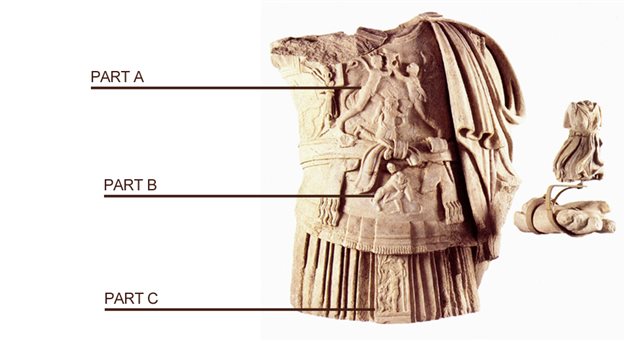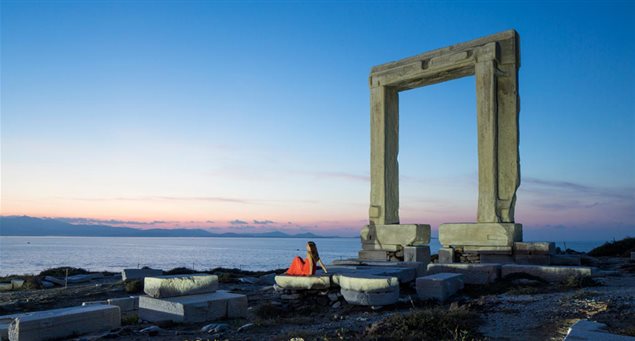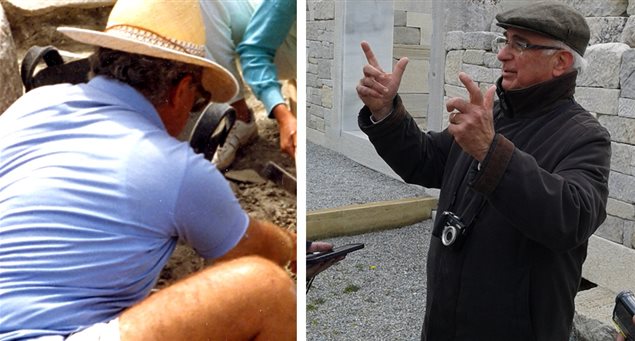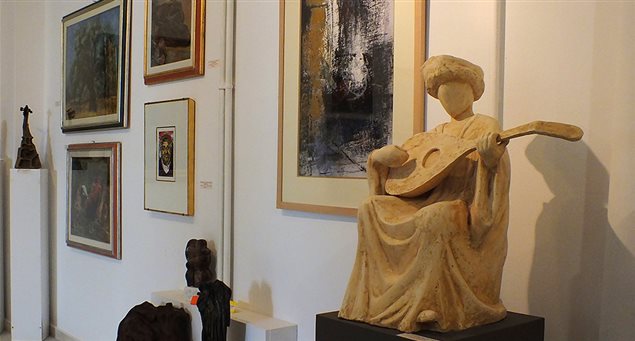
The Statue of Antonius, The Roman General from Yria on view at the Naxos Archaeological Museum (photo courtesy of Vassilios Lambrinoudakis)
An Archaeological Highlight at the Archaeological Museum of Naxos.
An impressive statue — among several on view — The Statue of Antonius, The Roman General from Yria, at the Naxos Archaeological Museum in Chora, Naxos, is that of a life-size headless torso with a decorated cuirass and hand stretched out holding a miniature marble sculpture of a maenad (female follower of Dionysus).
The statues was excavated fairly recently — in 1986 — from the sanctuary of Yria, just a few kilometers away from downtown Naxos. According to the information provided next to the statue at the museum, it is entitled, The Statue of Antonius, The Roman General from Yria.
We spoke to the archaeologist who led the team of the excavation of the site, Professor Vassilios Lambrinoudakis, and asked him to provide us with details on the images that are depicted on the armor of the statue.
Professor Lambrinoudakis explains:
“In 41 BC, the Roman general, Mark Antony, after the battle of Philippi (which defeated the assassins of Caesar) took control of the eastern part of the Roman Empire. Declaring himself the “New Dionysus” he ordered the people to worship him. The Naxians, whose patron god was Dionysus, built a statue in honor of Antony, (“the New Dionysus”) and placed it inside the sanctuary dedicated to “their” god Dionysus, located at Yria. The statue depicted this “New Dionysus” as a general wearing a cuirass decorated with reliefs that had references to Antony.”
According to Mr. Lambrinoudakis, the references to Antony, were depicted in three key areas on the armor:
Part A (the top): Here we see a synthesis of sculptures (the Punishment of Dirce) that Antony had taken back to Rome.
Part B (middle): Depicted here is the Greek hero Hercules wrestling with a lion. The reference to Hercules was because Antony believed he was a descendant from a son of Hercules named Anton.
Part C (bottom of armor): Here is a depiction of Dionysus, the Greek god of wine and merriment, with a panther (the god is often depicted with a panther), a reference implying Antony as the New Dionysus.”
Right (in hand): Emphasizing, further, the association of Antony to the god Dionysus, the sculpture placed a dancing maenad (maenads were female followers of Dionysus) in the palm of the general.




